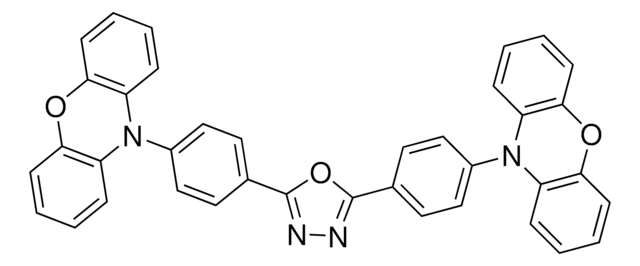DNAQF
DNA Quantitation Kit, Fluorescence Assay
Quantitation of DNA using bisBenzimide
Synonyme(s) :
dsDNA quantification
Se connecterpour consulter vos tarifs contractuels et ceux de votre entreprise/organisme
About This Item
Code UNSPSC :
41105500
Nomenclature NACRES :
NA.84
Produits recommandés
Niveau de qualité
Utilisation
sufficient for 750 assays (2 ml each)
Technique(s)
nucleic acid detection: suitable
Température de stockage
−20°C
Description générale
The kit has all the reagents necessary for quantitation of DNA using the fluorescent dye bisBenzimide (Hoechst 33258). The kit allows highly sensitive, quick, and accurate determinations of double-stranded DNA from 10ng/ml to 5μg/ml, even in the presence of RNA and proteins. Fluorometry is a highly sensitive and simple method used for DNA quantitation. The fluorescent dye, bisBenzimide H 33258, which binds primarily to AT sequences in the minor groove of double-stranded DNA (dsDNA), is specific for quantitation of nanogram amounts of DNA (10 ng/ml to 10 mg/ml). When excited at 360 nm, the fluorescence emission at 460 nm of the dye increases significantly in the presence of DNA.
Application
DNA Quantitation Kit, Fluorescence Assay has been used to measure the concentration/content of DNA:
- in neonatal rat ventricular myocytes (NRVMs)
- in human mesenchymal stem cells (hMSCs)/samples for normalization of the relative alkaline phosphatase (ALP) amount
- in mouse embryonic fibroblast cell line (NIH3T3 cells)
Caractéristiques et avantages
- Specific for the quantitation of nanogram amounts of DNA
- Works well with purified preparations as well as with DNA from crude extracts containing RNA and proteins
Composants de kit seuls
Réf. du produit
Description
- Detailed technical bulletin 1 ea
Produit(s) apparenté(s)
Réf. du produit
Description
Tarif
Code de la classe de stockage
10 - Combustible liquids
Certificats d'analyse (COA)
Recherchez un Certificats d'analyse (COA) en saisissant le numéro de lot du produit. Les numéros de lot figurent sur l'étiquette du produit après les mots "Lot" ou "Batch".
Déjà en possession de ce produit ?
Retrouvez la documentation relative aux produits que vous avez récemment achetés dans la Bibliothèque de documents.
Les clients ont également consulté
The Effect of Pericellular Oxygen Levels on Proteomic Profile and Lipogenesis in 3T3-L1 Differentiated Preadipocytes Cultured on Gas-Permeable Cultureware.
Weiszenstein M
PLoS ONE, 11(3), e0152382-e0152382 (2016)
Claire G Jeong et al.
Journal of biomedical materials research. Part A, 100(8), 2088-2096 (2012-05-23)
As articular cartilage is avascular, and mature chondrocytes do not proliferate, cartilage lesions have a limited capacity for regeneration after severe damage. The treatment of such damage has been challenging due to the limited availability of autologous healthy cartilage and
J M Teare et al.
BioTechniques, 22(6), 1170-1174 (1997-06-01)
Molecular biology is now a routine tool in almost all biological research fields. With the exponential growth in the number of molecular biological techniques, there is a recognizable need for sensitive, accurate and precise quantitation of nucleic acids. We present
Steve Elder et al.
Journal of biomedical materials research. Part A, 106(8), 2251-2260 (2018-03-27)
Given the limited availability of fresh osteochondral allografts and uncertainty regarding performance of decellularized allografts, this study was undertaken as part of an effort to develop an osteochondral xenograft for articular cartilage repair. The purpose was to evaluate a simple
Brian D Fink et al.
PloS one, 7(6), e39430-e39430 (2012-06-30)
It has been suggested that cells that are independent of insulin for glucose uptake, when exposed to high glucose or other nutrient concentrations, manifest enhanced mitochondrial substrate oxidation with consequent enhanced potential and generation of reactive oxygen species (ROS); a
Notre équipe de scientifiques dispose d'une expérience dans tous les secteurs de la recherche, notamment en sciences de la vie, science des matériaux, synthèse chimique, chromatographie, analyse et dans de nombreux autres domaines..
Contacter notre Service technique










